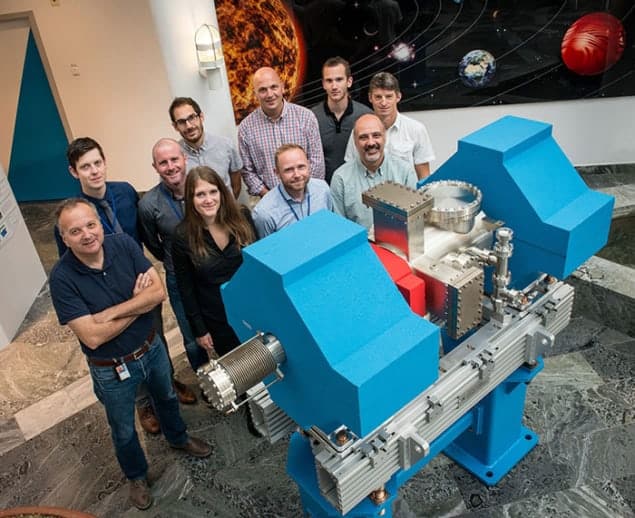Flash Physics is our daily pick of the latest need-to-know developments from the global physics community selected by Physics World‘s team of editors and reporters

Key prototype for European Spallation Source completed
A key piece of prototype equipment – the first “beam-transport modules” – for the €1.84bn European Spallation Source (ESS) has been completed this week. Built by engineers at Daresbury Laboratory in the UK, the unit is the first of more than 130 different beam-transport modules that will be designed and built at Daresbury and will make up nearly 70% of the entire accelerator length. Once complete, the ESS, which is situated in Lund, Sweden, will be the world’s most powerful neutron source, capable of peering deep inside a large variety of materials and could lead to advances in medicine, energy, transport and the environment. “The design of these modules is based around many years’ experience of designing modules for cutting-edge accelerators both in the UK and internationally,” says engineer and project-manager Paul Aden. He adds that the project “will deliver the final module in 2019, marking the end of the ESS stage 1 installation, and the point at which the accelerator can be switched on”. Read more about the ESS and the challenges involved in its development in the feature “Sights firmly set on target”, published in our 2015 Physics World Focus on Neutron Science.
SCOAP3 open access initiative gets three-year extension
CERN has announced that the SCOAP3 initiative to provide open access to journal articles written by particle physicists will be extended for three years to December 2019. SCOAP3 was started in 2014 and encourages the “gold” model of open access, whereby published papers can be read free of charge on the Internet and authors pay an article-processing charge to the publisher. Ten journals currently participate in SCOAP3. About 3000 libraries and library consortia, universities, research institutions and funding agencies from 44 countries are members of the initiative. In addition to CERN, which co-ordinates SCOAP3, the International Atomic Energy Agency and the Joint Institute for Nuclear Research are also members.
Uncovering the secrets of giant glowing space “blobs”

Astronomers have cracked the mystery of a brightly glowing, rare object in the distant universe, called a “Lyman-alpha Blob”. Such blobs are gigantic clouds of hydrogen gas that span hundreds of thousands of light-years and are found at very large cosmic distances. While it was previously unknown why these gigantic clouds of gas shine so brightly, the international team of researchers used the Atacama Large Millimeter/submillimeter Array (ALMA) and Very Large Telescope and have spotted two galaxies at the heart of one such cloud. Both galaxies are experiencing a frenzy of star formation, which lights up their surroundings. The team also spotted that these starburst galaxies are themselves nestled within a cluster of smaller galaxies, in what they claim is an early phase in the formation of a massive cluster of galaxies. Indeed, the two bigger galaxies will most likely evolve into a single giant elliptical galaxy. The research will be published in the Astrophysical Journal and a preprint is available on the arXiv server.
- You can find all our daily Flash Physics posts in the website’s news section, as well as on Twitter and Facebook using #FlashPhysics. Tune in to physicsworld.com later today to read today’s extensive news story on a new device that acts as a wavelength converter for quantum networks.



